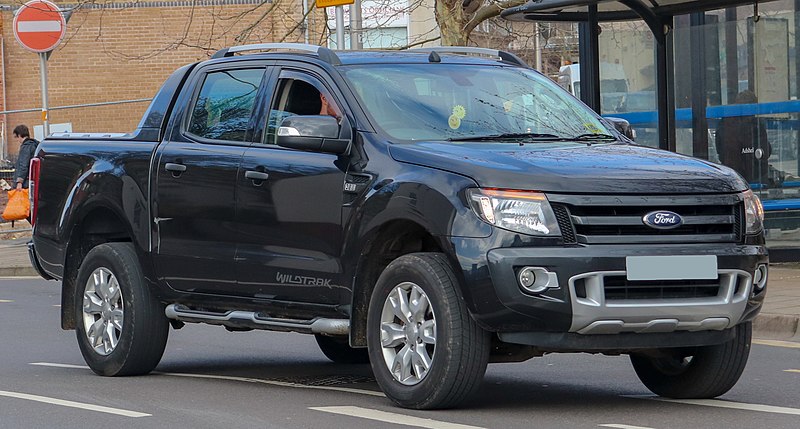
Ford Ranger Engine Problems: Complete T6 Troubleshooting Guide
Key Takeaways
| Problem | Main Symptoms | Possible Causes |
|---|---|---|
| EGR Cooler Failure | Coolant loss, white smoke, overheating | Internal cooler corrosion, design flaws |
| DPF Blockage Issues | Reduced power, limp mode, warning lights | Short trips, poor fuel quality |
| Turbocharger Problems | Power loss, oil leaks, whistling noises | Oil contamination, heat stress |
| Oil Pump Failure | Low oil pressure warnings, engine noise | Wear, contamination, design issues |
| MAF Sensor Faults | Poor idle, black smoke, check engine light | Contamination, electrical failure |
The Ford Ranger T6 (2011-present) has become one of South Africa’s most popular pickup trucks, powered by various engines including the 2.2L and 3.2L Duratorq diesel engines. While generally reliable and capable, the Ranger can experience specific engine-related issues that owners should understand. Proper maintenance and early problem recognition are crucial for preventing costly repairs and ensuring long-term reliability.
Ford Ranger Engine Specifications
| Specification | Details |
|---|---|
| Engine Options | 2.2L Duratorq, 3.2L Duratorq, 2.0L EcoBlue |
| Configuration | Inline-4/5, DOHC, Turbocharged Diesel |
| Fuel System | Common Rail Direct Injection |
| Power Output | 96-157 kW (130-210 HP) |
| Torque Output | 385-500 Nm |
| Production Years | 2011-Present |
1. EGR Cooler Failure
Causes
- Internal Corrosion: Coolant passages corroding from inside, allowing coolant mixing with exhaust gases.
- Design Vulnerability: Early T6 models had poorly designed EGR coolers prone to failure.
- Thermal Stress: Repeated heating and cooling cycles causing metal fatigue.
- Coolant Quality: Poor maintenance allowing corrosive buildup in cooling system.
Symptoms
- Significant coolant loss without visible external leaks.
- White or steam-like smoke from the exhaust pipe.
- Engine overheating, especially under load conditions.
- Milky or contaminated engine oil indicating coolant intrusion.
Solution
- Replace EGR cooler with updated or aftermarket improved design.
- Flush cooling system thoroughly to remove contamination.
- Replace engine oil and filter after coolant contamination.
- Consider EGR delete kit where legally permitted for off-road use.
DIY Difficulty / Hours
- EGR Cooler Replacement: Very High difficulty / 6-8 hours
- Professional Repair: R4,500 - R8,500 for cooler. R8,000 - R15,000 including labor.
Critical Warning
EGR cooler failure can cause severe engine damage through coolant contamination. Stop driving immediately if you notice coolant loss combined with white exhaust smoke.
2. DPF Blockage Issues
Causes
- Short Trip Driving: Insufficient highway driving preventing DPF regeneration cycles.
- Poor Fuel Quality: Low-grade diesel causing excessive soot production.
- Faulty Sensors: Temperature or pressure sensors preventing proper regeneration.
- Oil Contamination: Wrong oil grades affecting particulate filter operation.
Symptoms
- Reduced engine power and acceleration performance.
- Engine entering “limp mode” with restricted RPM.
- DPF warning light illuminating on dashboard.
- Increased fuel consumption and poor engine response.
Solution
- Perform forced DPF regeneration using diagnostic equipment.
- Take vehicle for extended highway drives to enable natural regeneration.
- Clean or replace DPF if severely blocked beyond regeneration.
- Use quality diesel fuel and recommended engine oil grades.
DIY Difficulty / Hours
- Manual DPF Regeneration: Medium difficulty / 1-2 hours
- DPF Cleaning: High difficulty / 3-4 hours
- Professional Service: R800 - R1,500 for regeneration. R4,500 - R8,500 for cleaning/replacement.
Prevention Tip
Take your Ranger on a 20-30 minute highway drive weekly at highway speeds to allow the DPF to regenerate naturally and prevent blockages.
3. Turbocharger Problems
Causes
- Oil Contamination: Poor quality oil or extended service intervals damaging turbo bearings.
- Heat Stress: Aggressive driving or immediate shutdown after hard work.
- Air Filter Neglect: Dirty air filters allowing debris into turbocharger.
- Oil Feed Issues: Blocked oil lines or insufficient oil pressure to turbo.
Symptoms
- Significant loss of power, especially during acceleration.
- Blue or black smoke from exhaust under acceleration.
- High-pitched whistling or whining noises from engine bay.
- Oil leaks around turbocharger housing area.
Solution
- Replace turbocharger with genuine Ford or quality aftermarket unit.
- Always use specified 5W-30 diesel engine oil with proper specifications.
- Replace air and oil filters during turbo replacement.
- Allow cool-down period before engine shutdown after hard driving.
DIY Difficulty / Hours
- Turbocharger Replacement: Very High difficulty / 8-10 hours
- Professional Repair: R8,000 - R18,000 for turbo. R12,000 - R25,000 including labor.
4. Oil Pump Failure
Causes
- Design Weakness: Early T6 models had oil pump drive chain tensioner issues.
- Oil Contamination: Poor maintenance allowing debris to damage pump gears.
- Wear and Tear: High mileage causing internal pump component wear.
- Oil Quality: Using incorrect oil viscosity affecting pump operation.
Symptoms
- Low oil pressure warning light activation.
- Engine making knocking or rattling noises, especially on startup.
- Poor engine performance and reduced power output.
- Metallic particles in engine oil during changes.
Solution
- Replace oil pump and drive chain/tensioner assembly.
- Flush engine thoroughly to remove any metal contamination.
- Replace oil filter and use fresh, quality engine oil.
- Inspect bearings and other engine components for damage.
DIY Difficulty / Hours
- Oil Pump Replacement: Very High difficulty / 8-12 hours
- Professional Repair: R2,500 - R4,500 for pump. R6,000 - R12,000 including labor.
Oil Pressure Information
The oil pump is critical for engine lubrication. Any oil pressure warning should be treated as an emergency - stop driving immediately to prevent catastrophic engine damage.
5. MAF Sensor Faults
Causes
- Contamination: Dirty air filter allowing debris to coat sensor element.
- Electrical Issues: Wiring harness damage or connector corrosion.
- Oil Vapors: Excessive crankcase ventilation contaminating sensor.
- Age-Related Failure: Sensor element deteriorating over time and mileage.
Symptoms
- Rough idle and poor engine performance at low RPM.
- Black smoke from exhaust due to rich fuel mixture.
- Check engine light with mass airflow-related fault codes.
- Difficulty starting engine, especially when cold.
Solution
- Clean MAF sensor with specialized MAF cleaner spray.
- Replace sensor if cleaning doesn’t restore proper operation.
- Replace air filter and check intake system for leaks.
- Inspect crankcase ventilation system for excessive oil vapor.
DIY Difficulty / Hours
- MAF Sensor Cleaning: Easy difficulty / 0.5 hours
- MAF Sensor Replacement: Medium difficulty / 1 hour
- Professional Service: R350 - R650 for cleaning. R1,200 - R2,200 for replacement.
Maintenance Schedule for Ford Ranger
| Service Type | Interval | Estimated Cost |
|---|---|---|
| Engine Oil Change | Every 10,000 km | R500 - R750 |
| Air Filter Replacement | Every 20,000 km | R200 - R350 |
| Fuel Filter Replacement | Every 30,000 km | R280 - R450 |
| DPF Regeneration Service | Every 40,000 km | R800 - R1,200 |
| EGR System Cleaning | Every 60,000 km | R1,200 - R2,500 |
| Turbocharger Inspection | Every 80,000 km | R800 - R1,500 |
FAQ
Is the Ford Ranger T6 engine reliable?
The T6 engines are generally reliable with proper maintenance, but early models (2011-2015) had more issues with EGR coolers and oil pumps that were addressed in later revisions.
What’s the average fuel consumption of Ford Ranger?
The Ranger typically achieves 8.5-11L/100km depending on engine size, driving conditions, and load. The 2.2L engine is more fuel-efficient than the 3.2L.
How often should I service my Ford Ranger?
Follow Ford’s 15,000 km service intervals, but consider 10,000 km intervals for severe conditions like dusty environments, short trips, or heavy towing.
What are the signs of EGR cooler failure?
Watch for unexplained coolant loss, white exhaust smoke, engine overheating, and milky oil indicating coolant contamination in the engine.
Can I prevent DPF problems in my Ranger?
Yes, regular highway driving, using quality diesel fuel, proper oil grades, and avoiding excessive idling can prevent most DPF blockage issues.
Should I delete the EGR system?
EGR deletion may improve reliability but is illegal for road use in South Africa. Consider this option only for dedicated off-road vehicles where emissions regulations don’t apply.
Conclusion
The Ford Ranger T6 offers excellent capability and performance when properly maintained. Understanding these common engine problems and addressing them promptly can prevent costly repairs and ensure reliable service. The key to Ranger longevity lies in following maintenance schedules, using quality fluids, and addressing any symptoms immediately.
While some issues like EGR cooler problems were more common in early models, Ford has made improvements over the years. For Ranger owners facing major engine problems, Engine Finder provides access to quality Ford engines for sale from trusted suppliers across South Africa.
References and Further Reading
Important Disclaimer
This content is for informational purposes only and is based on research from automotive industry sources. Engine Finder is not a certified automotive repair facility. Always consult with qualified automotive professionals before performing any repairs or maintenance. Improper repairs can result in personal injury, property damage, or vehicle malfunction. We assume no responsibility for actions taken based on this information.
